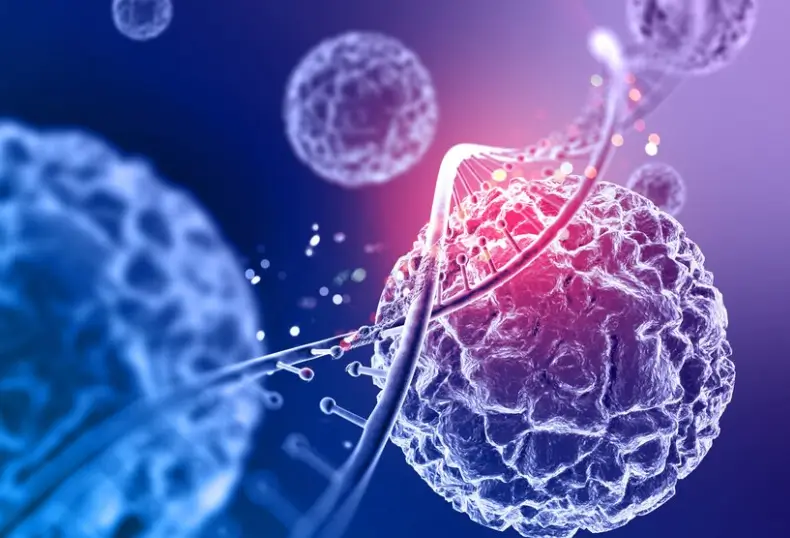An enzyme is a kind of protein located within a cell, which catalyses chemical reactions within the body that help sustain life. The function of enzymes is to carry out critical tasks. These involve muscle growth, removing toxins, and tearing down the molecules in food throughout digestion. Temperature, illness, or extreme chemical conditions can harm enzymes and alter their form. If this occurs, an enzyme no longer operates, thus affecting various other physiological functions. Enzymes are formed naturally in the body. The efficient implementation of the digestive system involves enzymes.
Metabolic enzymes facilitate and control any biochemical reaction within the human body, making them essential for cellular function and optimal safety. Digestive enzymes transform the food we consume into energy that the body can use for different biochemical purposes. Generally, our bodies generate both digestive and metabolic enzymes, as required.
Diagnostics also use the calculation of specific enzymes in body fluids to assess the location and degree of tissue injury. In addition to the diagnostic function, the enzyme activity can also provide prognostic knowledge (mostly measured from improvements in enzyme level over time).
Effective Functions Of Enzymes In The Body
1. Digestive Function Of Enzyme
Amylase is generated in the salivary glands, pancreas, and small intestine. One form of amylase, called ptyalin, is produced in the salivary glands and begins to work on carbohydrates when food is already in the mouth. And after you swallow, it remains alive. Pancreatic amylase is formed in the pancreas and transferred to the small intestine. Their starch granules begin to break down into carbohydrates, which are gradually metabolized into glucose by other enzymes. It is then drained through the membrane of the small intestine into the circulatory system of the body.
Protease emerges from the stomach, pancreas, and small intestine. A most biochemical reaction takes place in the small intestine and the stomach. Pepsin is the primary type of enzyme that destroys proteins in the intestine. As protein particles enter the small intestine, the digestive function of the enzyme starts.
Lipase develops in the pancreas and the small intestine. Within breast milk, a form of lipase is also used to help a baby absorb fat more quickly while breastfeeding. Lipids play a number of roles like long-term energy conservation and cellular safety service.
The Functions of enzymes in the body are to consume and ingest nutrients from the food and preserve all core processes of the system such as cell regeneration, anti-carcinogenic detoxification, digestion, enhancement of immunity, energy supply, and flow of blood. For instance, the faster the chewing period when the rice is chewed in the mouth, the more noticeable the sweet taste is. The carbohydrate in the rice is oxidized to maltose by mouth-secreted salivary amylase action. Chewing further at meals will also combine food with saliva to the maximum, which is essential for digestion. Additionally, the human body produces several hydrolytic proteins, such as pepsin and trypsin.
2. The Function Of Enzyme- Replication Of DNA
Usually, DNA polymerase enzymes act in a reasonable manner; each enzyme recreates one of its two strands – the leading strands and lagging strands – that make up a dual cell. Both are identified by the closest match they repeat.
The repeated strands are formulated as models, using the leading and lagging strands. Subsequently, the two new double-stranded DNA compounds formed comprise one strand from the first helix and one new strand. This method is called semi-conservative duplication, which is essential because it enables the transfer of genetic material from generation after generation.
The compounds in which enzyme functions are called substrates. The substrates bind to an area on the enzyme called the active site. Two models describe the relationship between the enzyme and the substrates. In the lock-and-key paradigm, an enzyme’s active site is uniquely formed to accommodate specific substrates. The active site and substratum in the caused-fit model do not match completely together; instead, each alters their shape to bind.
Whatever the circumstance, the reactions which occur significantly escalate — more than a millionfold — once the substrates bind to the enzyme’s active site. The natural processes result in a new substance or molecule which distinguishes from the enzyme afterward. Enzymes direct and manage a cell’s metabolic rate, and are regulated with care. The enzyme function mechanism involves regulating molecules that can either enhance (activator) or suppress (inhibitors) an enzyme function. An enzyme inhibitor is a compound that connects to an enzyme and inhibits a substrate’s binding, thus reducing its activity. When an enzyme creates so much of a material in an individual, the material starts to act as a barrier for the enzyme as a presence of low reinforcement, speeding chemical reaction.
3. Other Functions Of Enzymes
Enzymes also bear important manufacturing uses. Since ancient times, the fermentation of wine, leavening of bread, curdling of cheese, and brewing of beer was performed. However, such processes were not known until the 19th century as the outcome of the catalytic operation of enzymes. Enzymes have since gained growing significance in processes involving organic biological processes in manufacturing environments.
The functions of enzymes used in medication include destroying microorganisms that cause illness, encouraging the healing process, and diagnosing certain diseases. The enzyme thrombin is involved in the healing process. Several enzymes are used to treat other illnesses, induce regeneration in certain types of leukaemia, and prevent adverse responses in patients with penicillin allergies. The enzyme lysozyme is used to destroy germs that break cell membranes. The ability of enzymes to inhibit tooth decay and function as anticoagulants in the diagnosis of thrombosis, a condition resulting in the development of a clot or plugin a blood artery, has been studied. Enzymes can also be used to regulate the enzyme deficits and disease-induced disorders.
The production and processing of enzymes has become an exciting topic of research because of the broad application of enzymes. Enzymes from species such as bromelain can be derived from the skin of pineapples. However, owing to the low enzyme content of the body, bacterial fermentation creates a great deal of enzymes in the field. Generally, the necessary strains are chosen under suitable conditions and allowed to spread to acquire a huge proportion of enzyme preparations. Additionally, people review the synthetic enzyme synthesis.
As we can see, enzymes perform a significant role in the human immune system’s day-to-day activity. They are essential for the smooth functioning of the digestive system, the nervous system, muscles, and many others by connecting and modifying substances.







